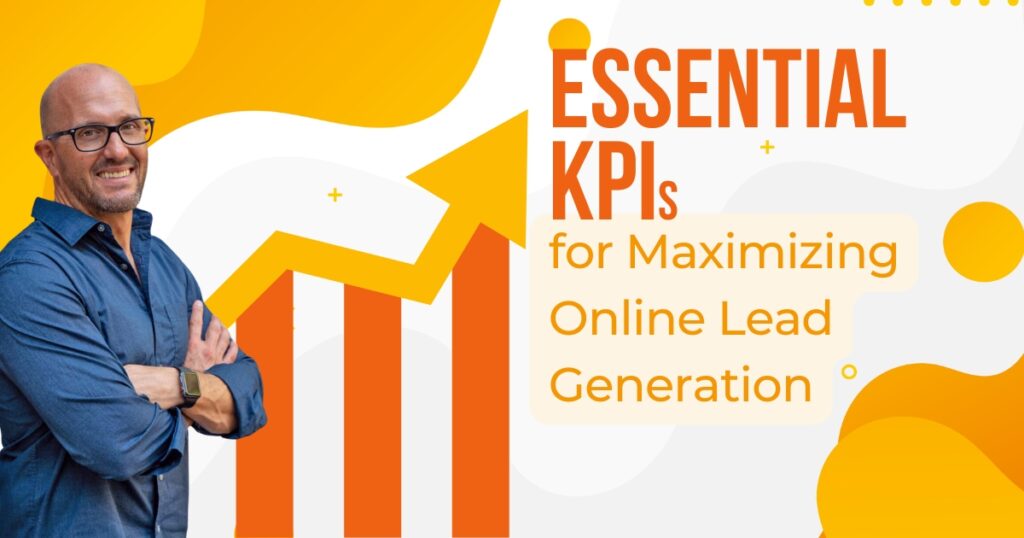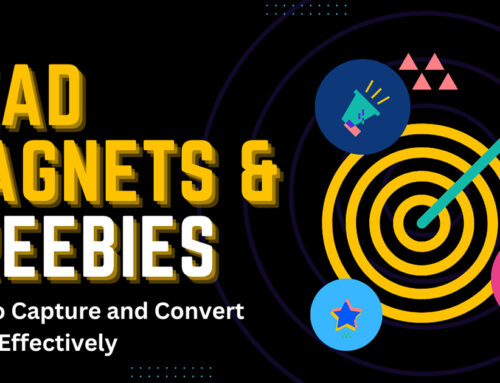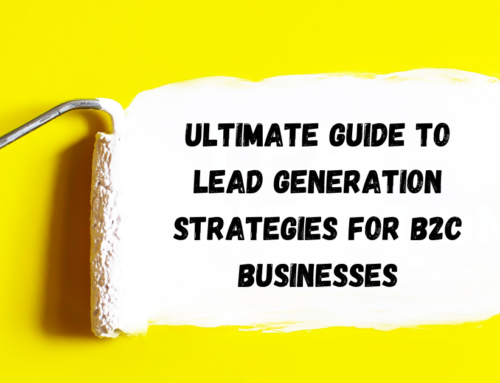
Online lead generation is a cornerstone of digital marketing, driving the acquisition of potential customers through various strategies. To ensure the effectiveness of your lead generation efforts, it’s essential to monitor specific Key Performance Indicators (KPIs). These KPIs provide valuable insights into the performance of different marketing strategies and help you refine your approach for better results. This article delves into the KPIs you should track for the following online marketing strategies: Content Marketing, Social Media Marketing, Email Marketing, Search Engine Optimization (SEO), Pay-Per-Click (PPC) Advertising, Lead Magnets and Freebies, Webinars and Live Events, Referral Programs, Partnerships and Collaborations, and Using CRM Tools. We will also explore Conversion Rates and Customer Acquisition Costs (CAC) as critical metrics for evaluating lead generation success.
This comprehensive guide is a continuation of our earlier post titled, Ultimate Guide to Lead Generation Strategies for B2C Businesses, where we highlighted 10 lead generation strategies that you can start doing today to grow your business. In this comprehensive guide, we will explore the essential KPIs for maximizing online lead generation for B2C and B2B.
1. Content Marketing
1.1. Engagement Metrics
Engagement metrics are crucial in assessing the effectiveness of your content marketing strategy. These include metrics such as page views, average time on page, and social shares. High engagement indicates that your content is resonating with your audience. Tools like Google Analytics can help track these metrics and offer insights into how well your content is performing.
1.2. Lead Conversion Rates
Lead conversion rates in content marketing measure the percentage of visitors who become leads after interacting with your content. This KPI helps determine whether your content is compelling enough to drive action. For example, if a blog post or an eBook is leading to a high number of sign-ups or inquiries, it signifies effective content that engages and converts.
1.3. Content ROI
Content ROI (Return on Investment) evaluates the financial return from your content marketing efforts. To calculate this, compare the cost of content creation and distribution to the revenue generated from leads acquired through that content. A positive ROI suggests that your content is a valuable asset in your lead generation strategy.
2. Social Media Marketing
2.1. Engagement Rate
The engagement rate measures interactions (likes, comments, shares) relative to the total number of followers or impressions. A high engagement rate indicates that your social media content is resonating with your audience. Tools like Hootsuite or Sprout Social can provide detailed reports on engagement metrics.
2.2. Social Media Conversion Rates
Social media conversion rates track the percentage of social media interactions that result in a lead. This KPI is crucial for understanding how well your social media efforts are driving lead generation. For instance, if a specific campaign leads to increased sign-ups or downloads, it shows effective use of social media for generating leads.
2.3. Follower Growth Rate
Follower growth rate measures how quickly your social media following is increasing. A steady growth in followers can indicate a successful social media strategy that attracts new potential leads. However, it’s important to ensure that this growth is accompanied by increased engagement and conversions.
3. Email Marketing
3.1. Open Rates
Open rates represent the percentage of recipients who open your email. This KPI helps gauge the effectiveness of your email subject lines and the overall appeal of your email content. High open rates often indicate that your emails are engaging and relevant to your audience.
3.2. Click-Through Rates (CTR)
Click-Through Rates (CTR) measure the percentage of email recipients who click on a link within the email. A high CTR indicates that your email content and calls-to-action (CTAs) are effective in prompting recipients to take the next step in the lead generation process.
3.3. Conversion Rates
Conversion rates in email marketing track the percentage of email recipients who complete a desired action, such as filling out a form or making a purchase. This KPI provides insight into how well your email campaigns are converting leads and can help optimize future campaigns for better results.
4. Search Engine Optimization (SEO)
4.1. Organic Traffic
Organic traffic refers to visitors who come to your site through search engines. Tracking this KPI helps evaluate the effectiveness of your SEO efforts in driving non-paid traffic to your website. Tools like Google Analytics and SEMrush can provide detailed insights into your organic traffic performance.
4.2. Keyword Rankings
Keyword rankings measure how well your website ranks for targeted keywords. Tracking these rankings helps assess the effectiveness of your SEO strategy and identifies opportunities for optimization. High rankings for relevant keywords generally lead to increased visibility and more leads.
4.3. Bounce Rate
Bounce rate is the percentage of visitors who leave your site after viewing only one page. A high bounce rate can indicate that visitors are not finding what they are looking for, which may signal a need for improvements in content or user experience.
5. Pay-Per-Click (PPC) Advertising
5.1. Click-Through Rate (CTR)
Click-Through Rate (CTR) in PPC advertising measures the percentage of people who click on your ad after seeing it. A high CTR indicates that your ads are compelling and relevant to your target audience. Monitoring this KPI helps optimize ad copy and targeting strategies.
5.2. Cost Per Click (CPC)
Cost Per Click (CPC) represents the amount you pay for each click on your ad. By tracking CPC, you can assess the cost-effectiveness of your PPC campaigns and make adjustments to bidding strategies and ad targeting to reduce costs while maintaining lead quality.
5.3. Conversion Rate
Conversion rate in PPC advertising tracks the percentage of clicks that lead to a desired action, such as a purchase or sign-up. This KPI helps evaluate the effectiveness of your PPC campaigns in driving valuable leads and can guide optimization efforts to improve ROI.
6. Lead Magnets and Freebies
6.1. Download/Signup Rates
Download/signup rates measure the percentage of visitors who download a lead magnet or sign up for a freebie. This KPI helps assess the attractiveness and effectiveness of your lead magnets in capturing potential leads.
6.2. Lead Quality
Lead quality evaluates the relevance and potential value of leads acquired through lead magnets. By analyzing the engagement and conversion rates of these leads, you can determine whether your lead magnets are attracting high-quality prospects.
7. Webinars and Live Events
7.1. Registration and Attendance Rates
Registration and attendance rates measure the number of people who sign up for and actually attend your webinars or live events. These KPIs help gauge the effectiveness of your promotional efforts and the appeal of your event content.
7.2. Post-Event Conversions
Post-event conversions track the percentage of attendees who take a desired action after the event, such as making a purchase or requesting a consultation. This KPI helps evaluate the impact of your webinars and live events on lead generation and sales.
8. Referral Programs
8.1. Referral Conversion Rates
Referral conversion rates measure the percentage of referred leads who convert into customers. This KPI helps assess the effectiveness of your referral program in generating high-quality leads and driving conversions.
8.2. Referral Volume
Referral volume tracks the number of leads generated through your referral program. Monitoring this KPI helps gauge the success of your referral strategies and identify opportunities for improvement.
9. Partnerships and Collaborations
9.1. Lead Generation Through Partners
Lead generation through partners measures the number of leads acquired through strategic partnerships and collaborations. This KPI helps evaluate the effectiveness of your partnership strategies in expanding your lead generation efforts.
9.2. Partnership ROI
Partnership ROI assesses the financial return from your partnerships and collaborations. By comparing the costs associated with these partnerships to the revenue generated from leads, you can determine their overall effectiveness and profitability.
10. Using CRM Tools
10.1. Lead Tracking and Management
Lead tracking and management through CRM tools involve monitoring and organizing leads throughout their lifecycle. Effective use of CRM tools helps streamline lead management processes and improve lead nurturing efforts.
10.2. CRM Integration Efficiency
CRM integration efficiency measures how well your CRM system integrates with other marketing tools and platforms. Efficient integration ensures seamless data flow and enhances the effectiveness of your lead generation and management strategies.
11. Conversion Rates
Conversion rates are a fundamental KPI in online lead generation, measuring the percentage of leads who take the desired action, such as making a purchase or signing up for a service. Tracking conversion rates helps assess the effectiveness of your lead generation strategies and identify areas for improvement. High conversion rates indicate that your marketing efforts are successfully driving valuable actions, while low rates may signal a need for optimization in your strategies or tactics.
12. Customer Acquisition Costs
Customer Acquisition Costs (CAC) represent the total cost of acquiring a new customer. Calculating CAC involves dividing the total cost of marketing and sales efforts by the number of new customers acquired. This KPI helps assess the efficiency of your lead generation strategies and determine which methods are most cost-effective. Reducing CAC while maintaining or increasing lead quality is crucial for maximizing return on investment and achieving sustainable growth.
Unlock Your Entrepreneurial Potential with Our Free Starter-Kit
Ready to take your entrepreneurial journey to the next level? Whether you're just starting out or looking to scale your business, having the right tools and strategies in place is crucial. That's why we've created the Ultimate Entrepreneur Starter-Kit—a comprehensive resource packed with actionable insights, templates, and expert guidance to help you navigate the challenges of entrepreneurship.
Download your free kit today and gain access to everything you need to build, grow, and sustain a successful business. Don't miss out on this opportunity to accelerate your success!
Conclusion
Tracking the right KPIs is essential for optimizing your online lead generation strategies. By closely monitoring metrics related to Content Marketing, Social Media Marketing, Email Marketing, SEO, PPC Advertising, Lead Magnets, Webinars, Referral Programs, Partnerships, and CRM Tools, you can gain valuable insights into the performance of your marketing efforts. Additionally, focusing on Conversion Rates and Customer Acquisition.




